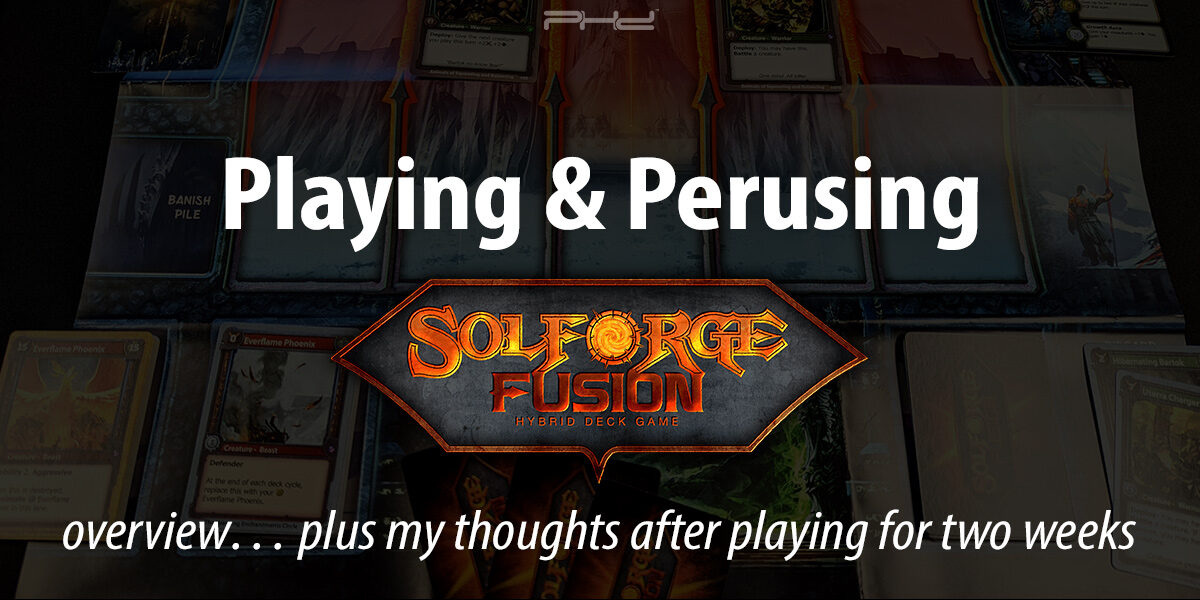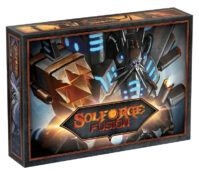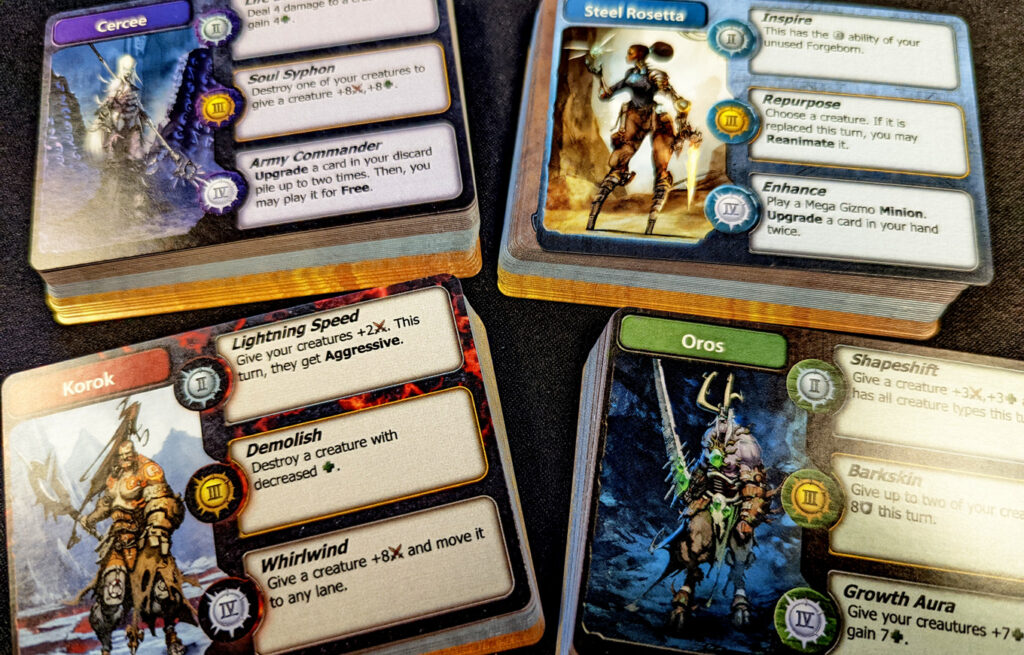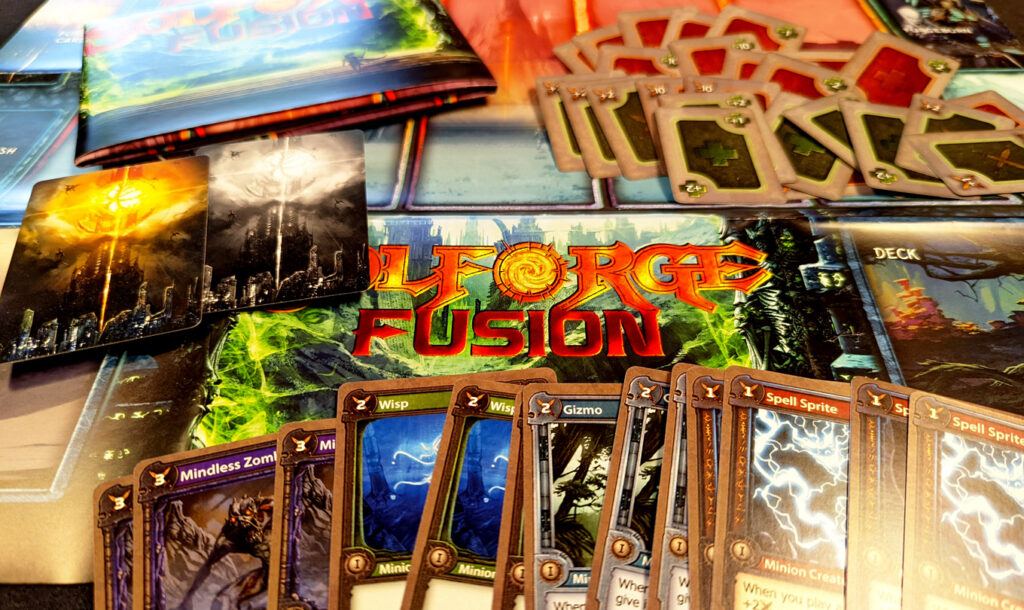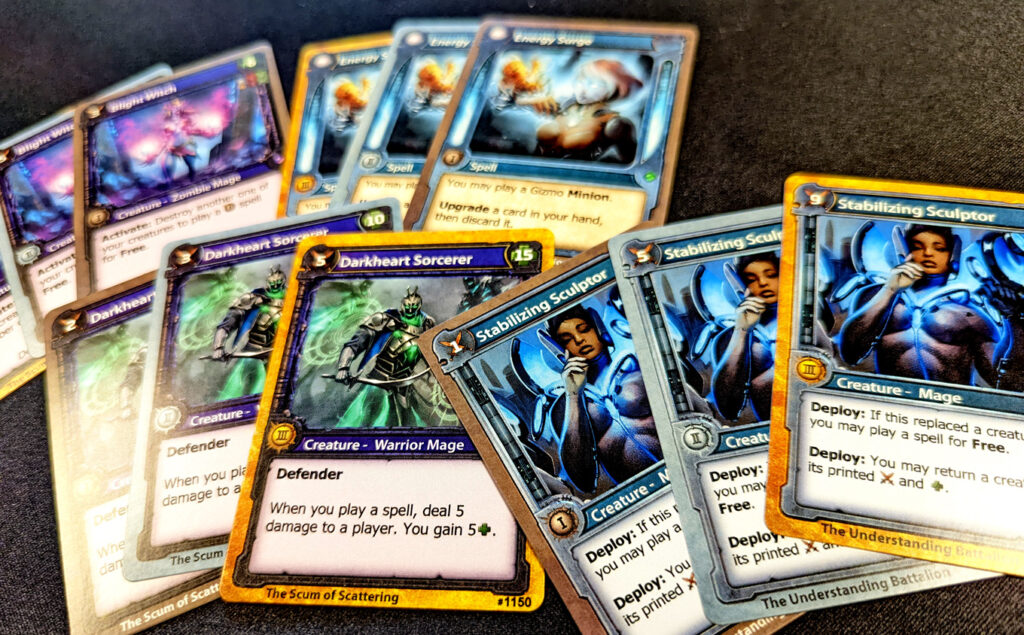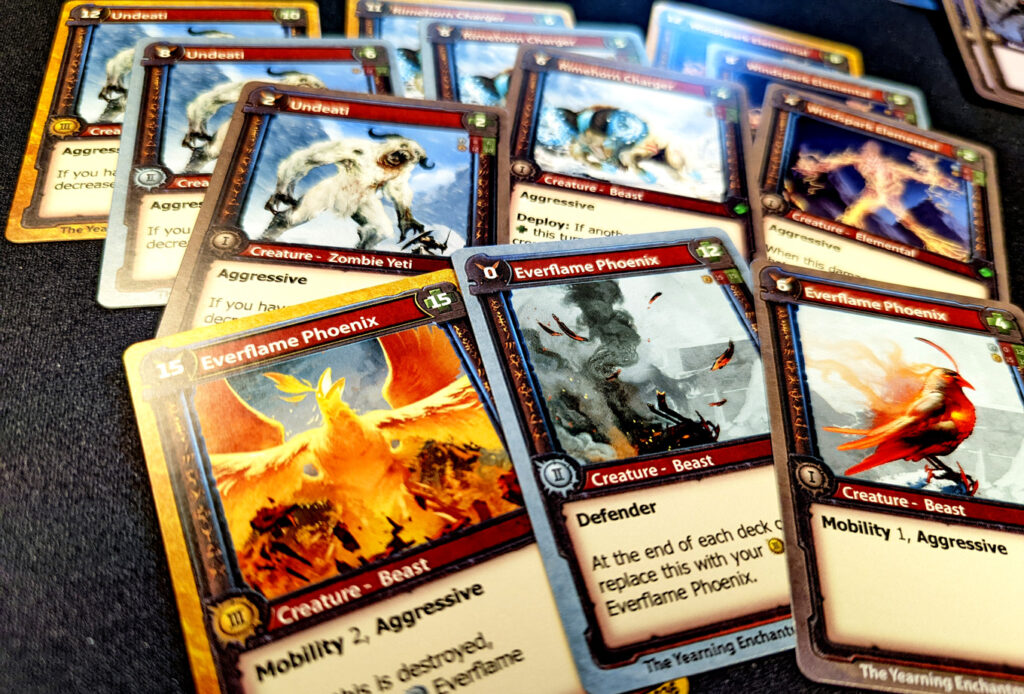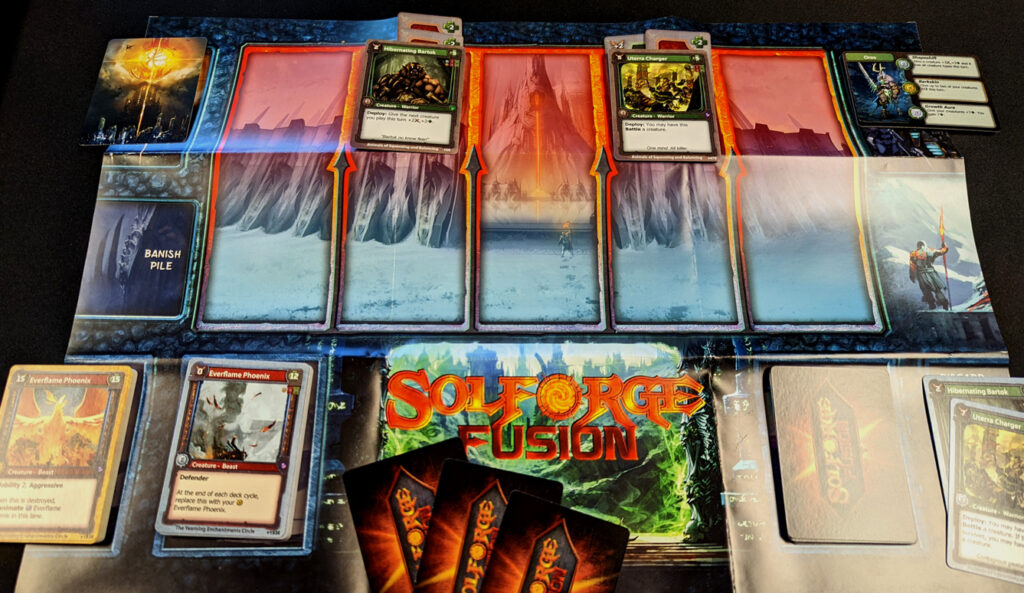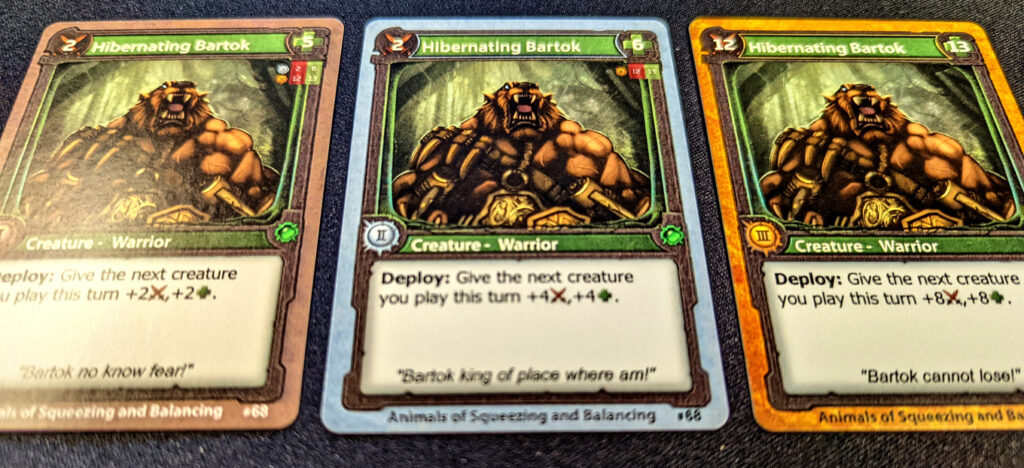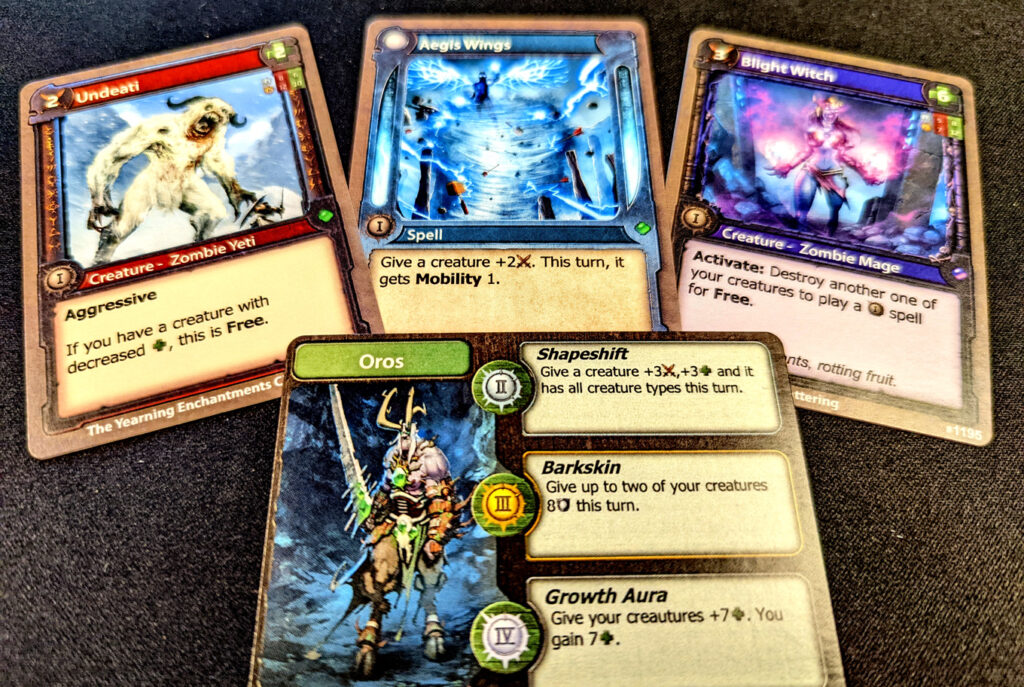Two weeks ago, I had the awesome opportunity to work the PHD booth at the GAMA trade show and show off some of the awesome games we are currently carrying—or will be carrying soon. One of those is the upcoming SolForge Fusion from Stone Blade Entertainment.
This is a reimagining of their previous digital-only game SolForge, but it’s now in a physical form and uses digital printing to support algorithmically generated and unique decks as well as procedurally generated cards, with over 15,000 cards in the base set.
SolForge Fusion: Starter Kit
Publisher: Stone Blade Entertainment
Item Code: SBESFF001
MSRP: $34.99
Releases Q2 2022
Learn more about the Starter Kit & Booster Kit in our SolForge Fusion article.
As I was one of the lucky people demoing the game at our booth, Stone Blade gifted me a production-run set of cards, not only to use for the week, but to take home. So in addition to jamming out tons of games with you awesome retailers who were able to make it to our booth, I got to play in the evenings with my coworker, as we were both completely enamored from our first play. And since I’ve been home, I’ve gotten several more games in—continuously excited, even with just my four half-decks, to see what synergies pop up next.
Half-decks? That’s right. If you haven’t looked into SolForge Fusion yet, here’s a brief intro. You’ll buy a Starter Kit, which contains everything two players need to get started, including paper mats, minion tokens, attack & health tracker mini-cards, and four half-decks (one of each faction). To play, pick two half decks of different factions and combine them. When you want to expand your options, pick up a Booster Kit. That’s just four more half decks (again, one of each faction) with no other frills.
The factions are Alloyin (blue), Nekrium (purple), Tempys (red), and Uterra (green) and have varying abilities, thematic focuses, and mechanical identities, as one with any TCG experience might expect. But since each (half-)decklist is unique, even an individual list can have emergent properties that either enhance or subvert their faction’s core identity. And as the player, you’ll get to choose what other half-deck to pair with it, creating a doubly unique Forge Deck of your very own. By finding and strengthening themes in, or shoring up weaknesses of, your various decks, you’ll be able to create a powerful pairing that suits your play style perfectly.
For me so far, that has been the pairing of my blue deck (which is uniquely and algorithmically titled The Understanding Battalion, and led by the Forgeborn hero Steel Rosetta) and my purple deck (titled The Scum of Scattering and led by Cercee). This pairing is full of ways get extra upgrades for cards, spells, ways to play extra spells as free actions, and rewards for playing spells. As you can see, we’ve got a theme going here. On the other hand, my pairing of purple with red (The Yearning Enchantments Circle, led by Korok) lets the purple cards focus more on their aggressive tendencies, with high-powered red cards—and literally the keyword Aggressive—letting me deal way more damage than my opponent expects.
A game of SolForge Fusion starts with each player separating out their Level 1, Level 2, and Level 3 cards. Your starting deck is all twenty of your level 1 cards shuffled together. Choose one of your two Forgeborn (the heroes of your half-decks) to lead you into battle. Set aside your unused Forgeborn (you probably won’t need this) and your Level 2 & 3 cards (you will definitely need these). Select a player to be the first “Forge player,” and each player draws an opening hand of five cards.
The Forge player gets to perform one action, which almost always means playing one card from hand and then upgrading it (more on that later). Then, the non-Forge player can perform one action and then upgrade it. Then do it again. After each player has performed two actions, combat resolves, the Forge player switches, players discard their hands, and they draw a new five cards.
Playing a spell will have a one-time effect. Playing a creature will let you put it into one of five lanes, preparing for the imminent combat. The Forge player plays their creatures to the front of a lane, in an aggressive position. The non-Forge player plays their creatures to the back of a lane, defensively, to block an attacking creature in that same lane (or just to get ready for the future).
When combat resolves, front-row creatures with no “blocking” creature will hit the opponent, reducing their 50 health. Reduce your opponent’s health to 0 to win. Opposing creatures in the same lane attack each other, and the players will mark permanent changes to the creature’s health. If a creature has no health left, it’s banished.
Wait, banished? Not just discarded? That’s right, ’cause in SolForge Fusion, whenever you play a card, you upgrade it. That means searching your next-level stack for a higher-level version of the same card. So when you play your Level 1 Hibernating Bartok, put it into one of your five lanes, and then grab your Level 2 Hibernating Bartok and put it into your discard pile. When the L1 version dies, it’ll be banished from the game, because it’s already been replaced by its upgrade.
After three “turns” (each player performing two actions, resolving combat, swapping the Forge, discarding their hands, and drawing five new cards), the cycle ends, and players will reshuffle their discard piles into their decks before starting their first turn of the next cycle. In this way, you’ll never draw the last five cards of your deck. And on top of that, all those upgraded cards are now available to be drawn and played, so you’ll be playing bigger and bigger cards over the course of the game. And of course, when you play a Level 2 card, it’ll upgrade into a Level 3 card for the next cycle. However, when you play a Level 3 card, it doesn’t upgrade anymore, and its bloodline will end there. But at that point, the game will be ending soon enough.
Another important element of SolForge Fusion‘s cycles is the heretofore overlooked Forgeborn. Not only are they the heroes of your half-decks (Turtle Power!), but they feature three special powers: one for each cycle, starting with cycle 2. During the matching cycle, you can tap your Forgeborn to use its power. Each is usable only once per game, though card abilities may give you some extra triggers of these powerful effects. And using a Forgeborn’s ability is a free action. This is something you can do while you have priority before or after your main action. Some other things that are free actions are creatures’ Activate abilities, Mobility (tap a creature to move it to another lane), and playing some cards with conditional “Free” clauses. If you stack up a few free actions on top of your normal play, you can get some pretty huge and satisfying turns.
SolForge: Fusion has been a blast, and I can’t wait to get my hands on more decks. My purple half-deck would love a pairing with some more spell-loving stuff, and I think my blue half-deck would pair quite well with a green package that makes tons of Wisp Minions. Those are the first things I’ll be looking for as I rip open my packs, but I’m excited to see what other synergies emerge—and what the 15,000+ card pool has yet to surprise me with.
